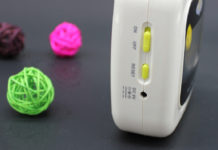 Infant congestion is due to the stuffy nose (nasal congestion). You will be confused that this stuffy nose is caused due to the thick mucus in the nose. But this is not true.
Infant congestion is due to the stuffy nose (nasal congestion). You will be confused that this stuffy nose is caused due to the thick mucus in the nose. But this is not true.
Infant nasal congestion is due to the thickening of the tissue lining of the nose by the inflammation of blood vessels.
This is caused by a virus and within few weeks it will disappear on its own.
The nasal congestion in infants can cause breathing problems. It can interfere with the speech development and hearing.
Difficulty in breathing during nights can cause snoring and therefore sleep of infant interferes with significant congestion.
From enlarged adenoids, the nasal congestion in children causes the right sided heart failure and the chronic sleep apnea with insufficient oxygen levels. After the removal of tonsils and adenoids by surgery, this problem can be solved.
Infant congestion is caused in the same way as the running nose that includes:
- Sinus infection
- Flu
- Common cold
- Vasomotor rhinitis
- Other allergies or hay fever
- over use of drops or nasal spray
Over the counter medications can make the breathing comfortable and gives relief from stuffy nose. The blood vessels shrink in the lining of the nose by decongestants.
You should not use the decongestant drops or spray for more than 3 days, as they make the congestion worse. The amount of mucus in your baby’s nose can be reduced by the antihistamines, but be careful as it can make your baby drowsy.
Not only the medicines, but the gentle solutions can give relief from the runny nose. Some of them are:
- The humidity in the air can be increased by the humidifier or vaporizer.
- Gentle saline nasal sprays can be used.
To remove the mucus in infants, the infant nasal aspirator can be used. Put the saline nasal drops in each nostril to loosen the sticky and thick mucus. You should never insert the cotton swabs into your child’s nostrils.
Infants congestion will be worse while lying down. To avoid this, you should keep the baby’s head elevated or upright. You can make the breathing easier by placing the adhesive strips on the nose of congested baby.
You can consult your physician when you observe:
- A stuffy nose that interferes significantly with infant life and lasts for 2 weeks
- Stuffy nose that lead to swelling in forehead, eyes, cheeks or nose
- Stuffy nose that lead to blurred vision
- Coughing that lasts for 10 days
- Throat pain that is increased and yellow or white spots is observed on the other parts of throat or tonsils.
- Gray or yellow- green mucus that is produced by the cough.
Diagnostic tests to determine infant congestion:
- Blood test
- X-rays of chest and sinuses
- Throat and sputum culture
- Serum total IgE
- Allergy tests.
Once the diagnosis is made, treatment is given to your infant to get rid of infant congestion.















